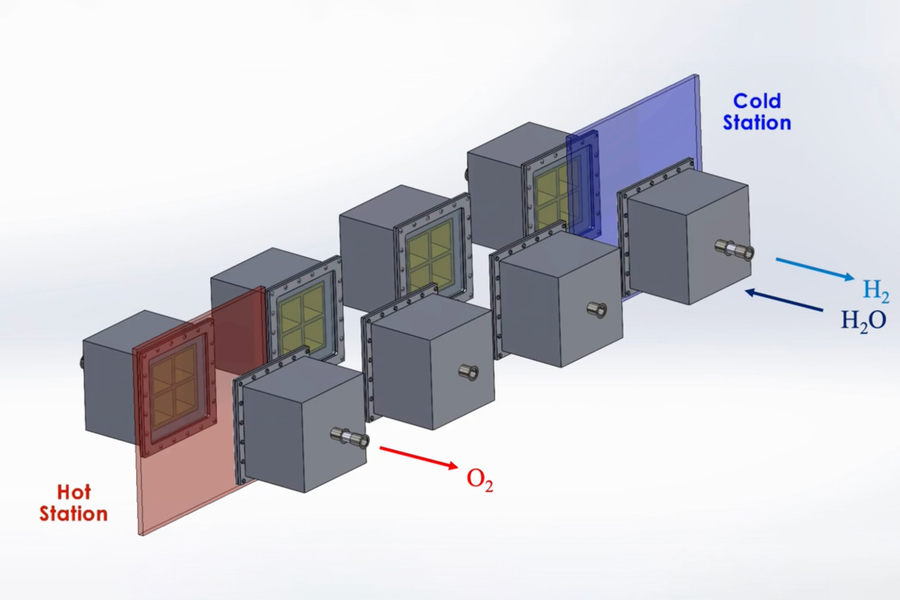MIT researchers have developed a new CSP system to produce green hydrogen. The system, which is currently in the conceptual stage, aims to use up to 40% of solar heat for green fuel generation – a significant improvement from previous systems, which only achieved a 7% utilization rate.
“The increase in efficiency could drive down the system’s overall cost, making solar thermochemical hydrogen (STCH) a potentially scalable, affordable option to help decarbonize the transportation industry,” the scientists said. “It is a big step toward realizing solar-made fuels.”
Similar to other STCH designs, the conceptual system can be built around an existing CSP plant, absorbing the receiver’s heat and directing it to split water and produce hydrogen. However, there is a novel two-step thermochemical reaction at the heart of the new system.
“In the first step, water in the form of steam is exposed to a metal. This causes the metal to grab oxygen from steam, leaving hydrogen behind,” the scientists said. “Once hydrogen is separated, the oxidized (or rusted) metal is reheated in a vacuum, which acts to reverse the rusting process and regenerate the metal. With the oxygen removed, the metal can be cooled and exposed to steam again to produce more hydrogen. This process can be repeated hundreds of times.”
The efficiency of this process is related to its train-like design, with box-shaped reactors running on a circular track. Each reactor in the train would house the metal repeatedly going through different thermochemical stations.
“Each reactor would first pass through a hot station, where it would be exposed to the sun’s heat at temperatures of up to 1,500 C. This extreme heat would effectively pull oxygen out of a reactor’s metal,” the group said. “That metal would then be in a ‘reduced' state – ready to grab oxygen from steam. For this to happen, the reactor would move to a cooler station at temperatures around 1,000 C, where it would be exposed to steam to produce hydrogen.”
Popular content
Another improvement in the system is its ability to recover most of the heat used in the process. It does so by allowing reactors on opposite sides of the circular train-like track to exchange heat through thermal radiation. In addition, a second set of reactors circle around the first train, moving in the opposite direction and operating in cooler temperatures. This allows the evacuation of oxygen from the hotter inner train, without the need for energy-consuming mechanical pumps.
“When fully implemented, this system would be housed in a little building in the middle of a solar field,” said researcher Aniket Patankar. “Inside the building, there could be one or more trains each having about 50 reactors. And we think this could be a modular system, where you can add reactors to a conveyor belt, to scale up hydrogen production.”
The research team said it will build a prototype of the system in the coming year.
“We’re thinking of hydrogen as the fuel of the future, and there’s a need to generate it cheaply and at scale,” said the study’s lead author, Ahmed Ghoniem.
This content is protected by copyright and may not be reused. If you want to cooperate with us and would like to reuse some of our content, please contact: editors@pv-magazine.com.


I have a question about the reuse of metal is if we reverse the process of rusting so it would be costly and if not so why we can’t use this process in industry to restore various machinery.